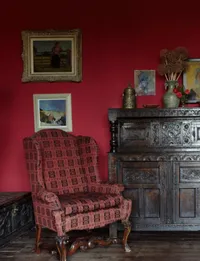How do you decorate with jewel tones? The 10 designer-approved tricks to make this palette work
Decorating with jewel tones will lift your mood, create a striking interior and make your spaces feel instantly cozy

Decorating with jewel tones is to decorate with the richest of hues. They're colors that call to mind royalty, splendor and grandeur, but because of that, they can be a little tricky to use around in the house while feeling modern. With a little bit of color courage, trust us, the results are well worth it.
For those who believe that color is therapeutic, jewel tones could be just what you need to give your home a lift-me-up. Their bold, deep hues are striking yet comforting and, used in the right way, can make your space feel cozy.
However, in the wrong hands, jewel tones can quickly feel cliched and dated, so to get to grips with embracing these colors in a contemporary way, we asked the experts to elaborate on their best jewel-tone designs. Take a look at these tips, dipped in color theory, for inspiration.

Aditi is a homes writer and editor with several years of experience. Her articles, backed by expert insights, offer suggestions aimed at helping readers make the best home design choices. For this article, she spoke to several designers to understand ways to use jewel tones at home.
10 winning ways to include jewel tones color palette at home
Jewel tones are those saturated colors that nod to precious gems. These have high levels of color saturation which makes them dynamic and eye-catching. Think deep emerald green, sapphire blue, ruby red, amethyst purple, and citrine yellow.
They are generally warm colors, and given their inspiration in precious and semi-precious gemstones, they're colors that signify wealth, status, and royalty. Used in modern design, it can instantly give a sense of elegance and elevation.
1. Go bold with a clashing palette
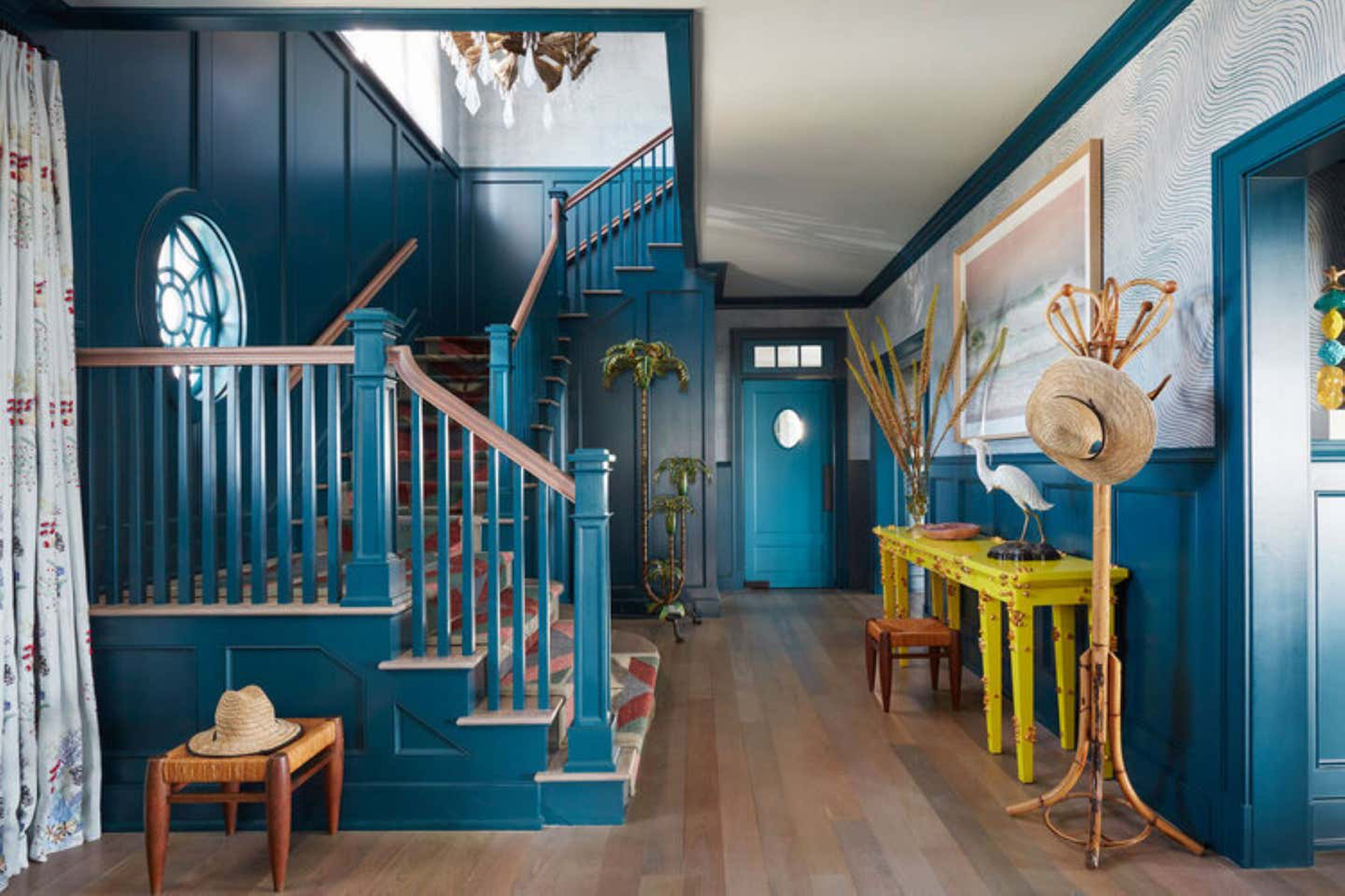
Depending on your style and taste, you can choose to go bold with large doses of color or keep it limited and subtle. If you're going with the former, and want to make a big statement in your interiors, then using clashing colors could be just the thing.
Bring in jewel tones on major elements such as walls, upholstery, area rugs, and cabinetry, and contrast it with another key element in the room. If you wish, you could repeat this formula in other rooms.
The Livingetc newsletters are your inside source for what’s shaping interiors now - and what’s next. Discover trend forecasts, smart style ideas, and curated shopping inspiration that brings design to life. Subscribe today and stay ahead of the curve.
'Richly saturated, ‘jewel tones’ are deep sumptuous colors that are reminiscent of dark amethyst, emerald green, and sapphire jewels,' says Ruth Mottershead, creative director at Little Greene. 'These colors work fantastically well when used all over in a scheme creating a sense of luxury, coziness, and warmth in a living space or bedroom.'
'I think jewel tones look particularly nice in a dining room,' says Tash Bradley, director of interior design at Lick. 'A jewel tone looks brilliant with low-level candle lighting in the evening. For example, Teal 03 from Lick’s collection with Soho House, is wrapped in the bar at the Dean Street Soho House and is meant to be seen more at night.'
2. Try tone-on-tone
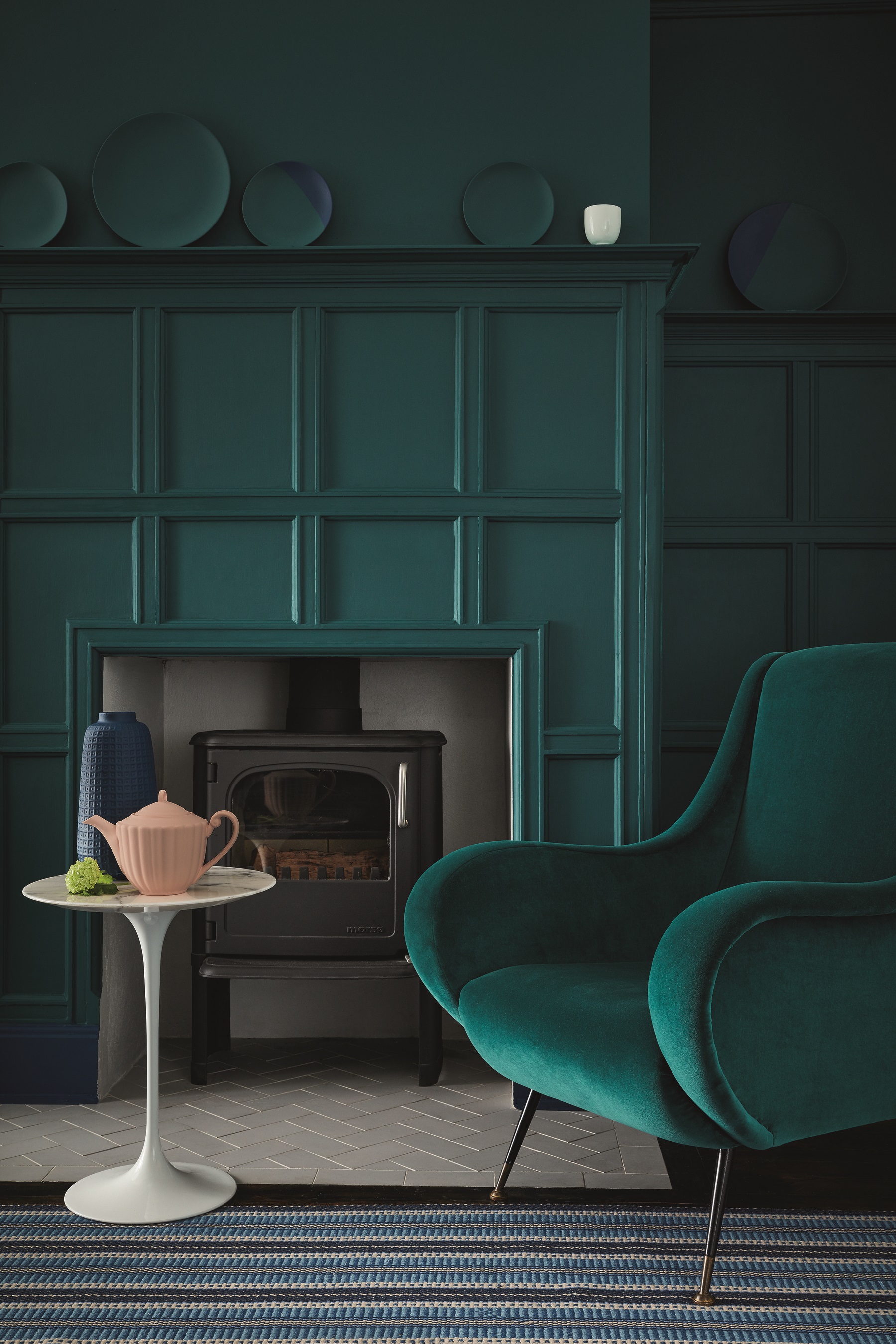
Tone-on-tone color layering can beautifully, and gracefully transform a room, and give it depth and warmth, especially if you're using a jewel tone. This is especially useful for creating a cozy living room, or for cozy dining.
For the most striking look, use the same tone on, say the furniture and walls, or furniture and flooring for a more sumptuous interior. But if you want a slightly more diverse room, choose two tones of the same color. Remember, the deeper the jewel tone, the less they'll compete with one another, so pick your favorites and color away.
3. Combine jewel tones with black
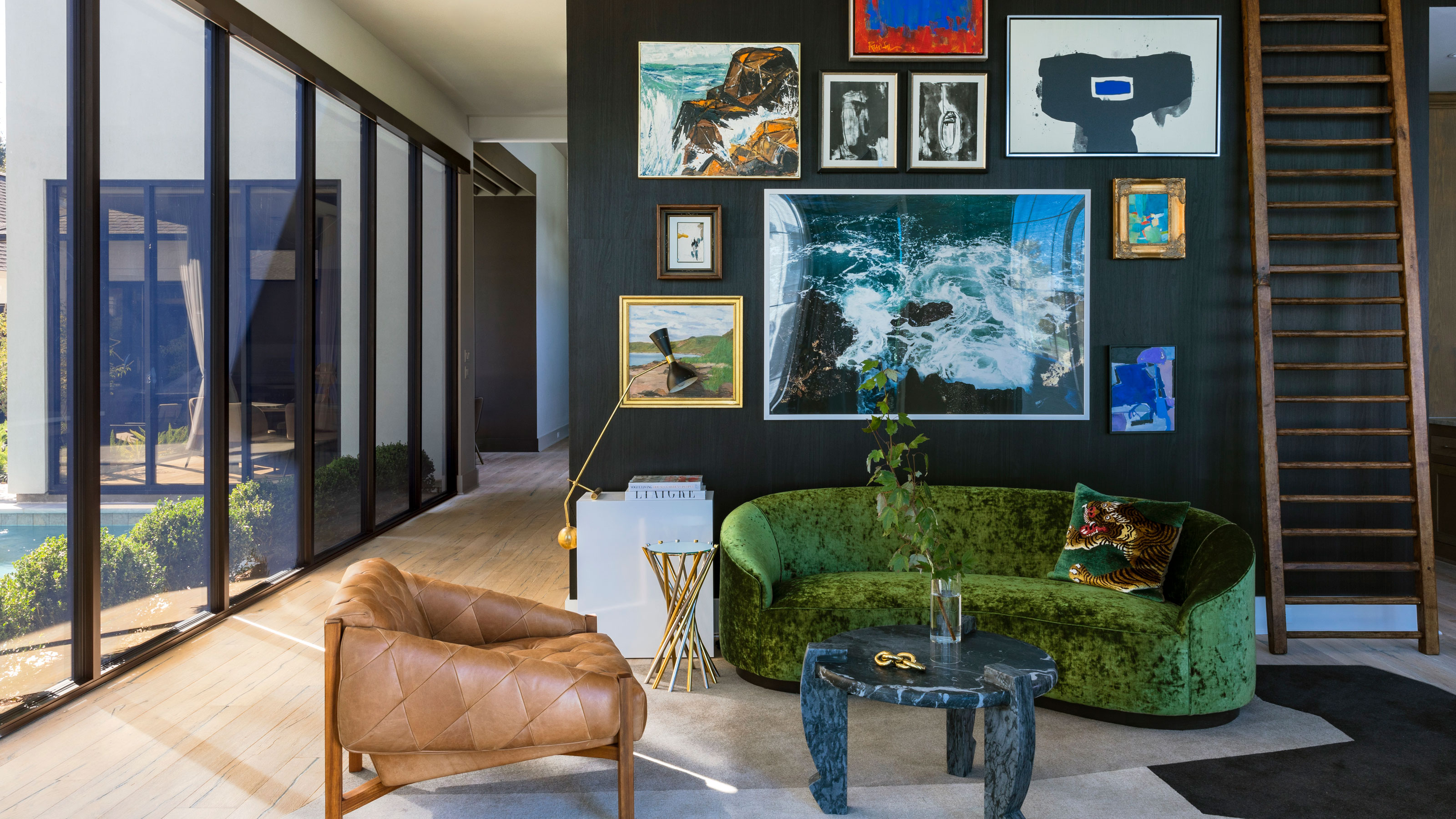
Dark hue, such as charcoal grey or black, create an interesting backdrop for jewel tones, creating a deserving rich and moody space, but also one that feels modern. In this scheme by interior designer Kenneth Brown, the emerald crush velvet sofa could feel too overly plush and decorative, but paired with a black accent gallery wall, this living room furniture takes on a whole new sense of style.
4. Try a color blocking
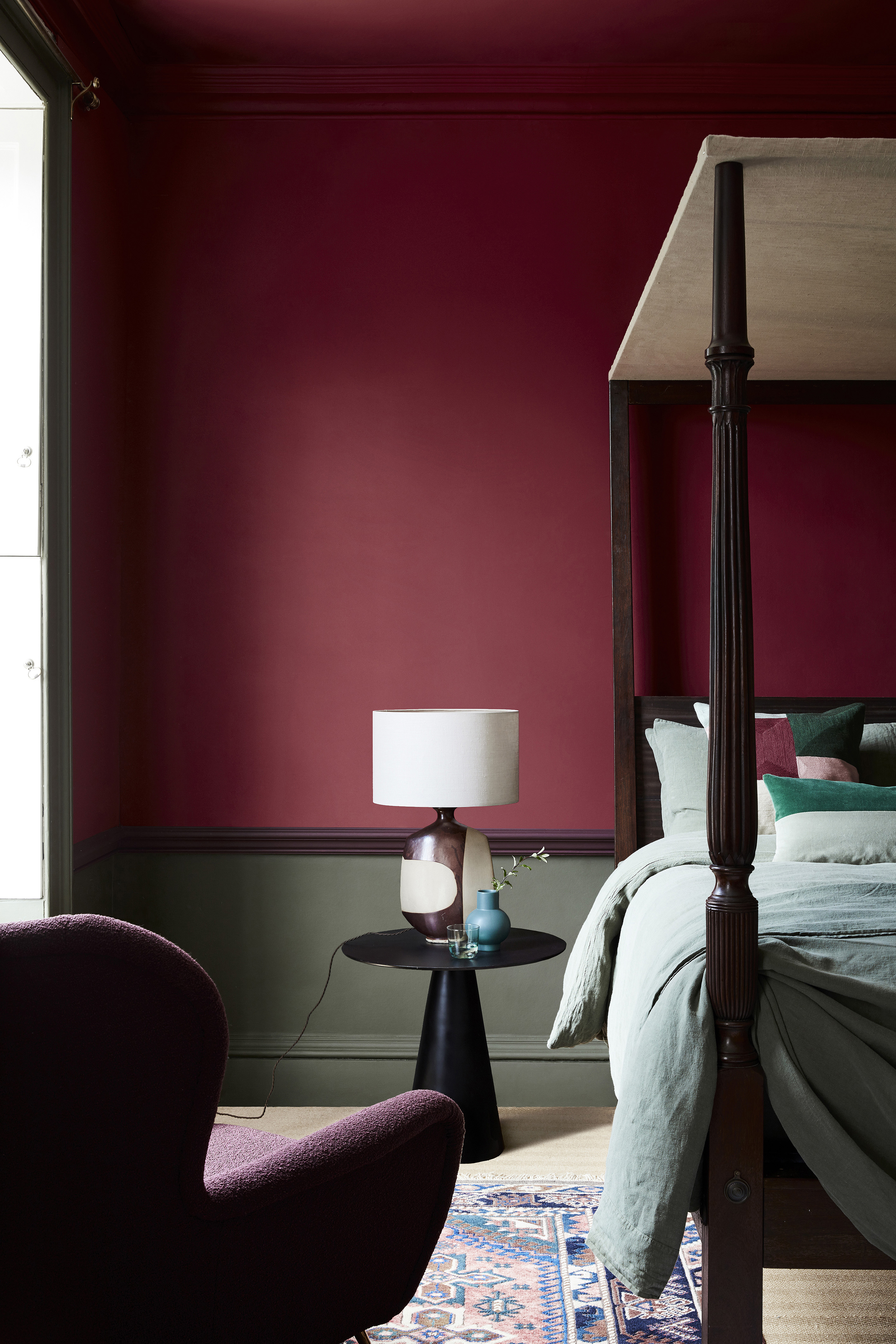
Color-blocking is a popular trend that is a firm favorite for designers. This is a great way to liven up a neutral scheme or add depth and character to a room. Color blocking works especially well in smaller spaces where the impact of the hues can be seen much more clearly and vividly.
If you feel using a single jewel tone will make your room look too one-dimensional, consider using two, on walls or furniture, for the perfect color block. Remember, you don't need to divide the walls into equal halves for the block. A 60-30, or 80-20 split can look perfectly charming too.
While talking about color blocking with paints, you could consider creating eye-catching shapes, like stripes, round shapes, or geometrics. You could also choose a different hue for the walls, and another for the wall paneling or wainscoting.
5. Mix several jewel tones in one space
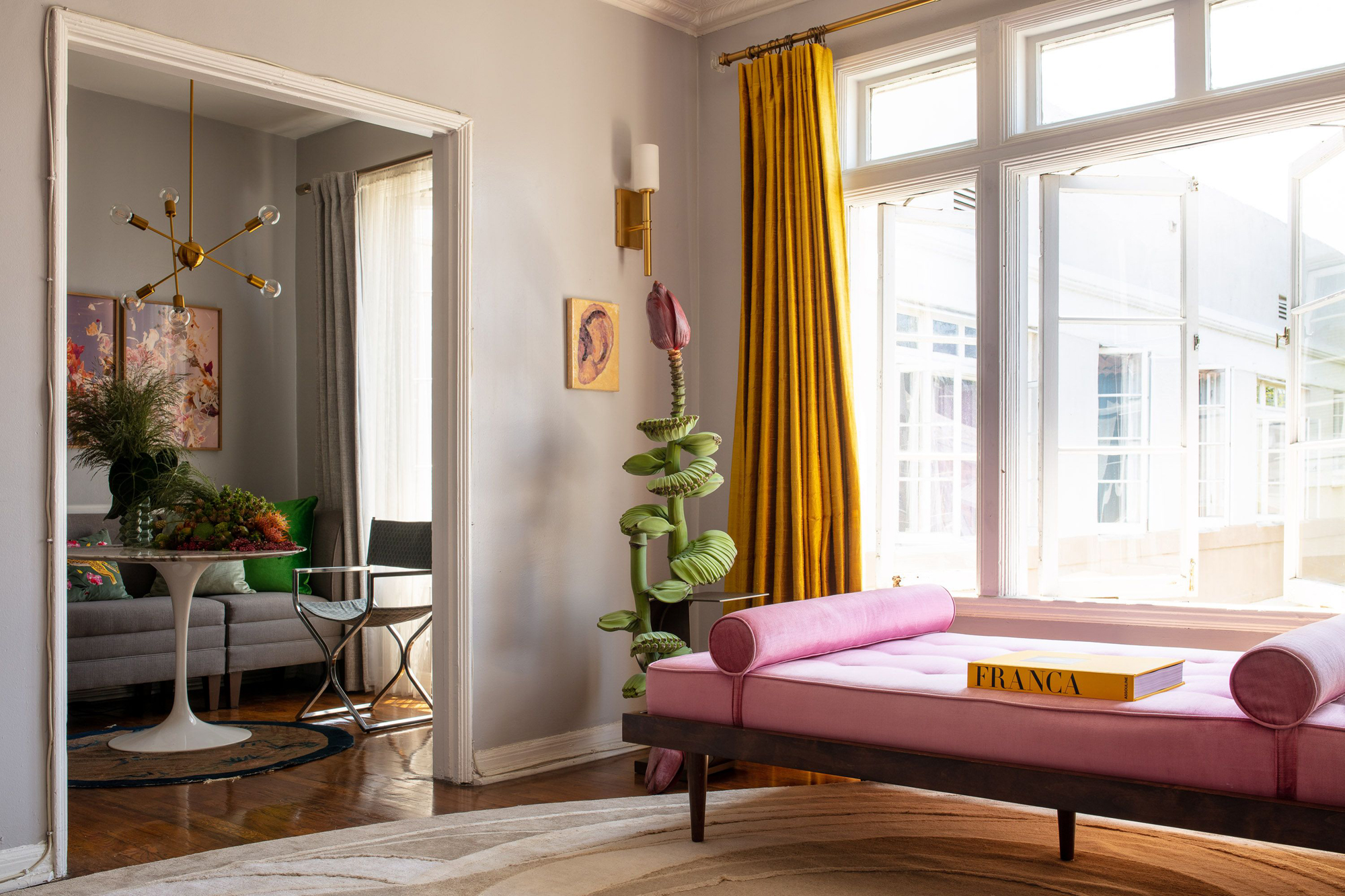
Most jewel tones are similar in color value, and so work well when paired together. Mixing them up in a space could be a good idea when you're looking to tone down the boldness of the room, where only a single color prevails. Opt for dark, rich shades to avoid an overly jarring look. Consider a combination of blues, green, and gold together. Several colors go with teal and can create a warm interior.
'Jewel tone colors such as deep teals, majestic purples, sapphire reds, and emerald greens bring a sense of opulence and indulgence to any interior,' says Philippe Desart, managing director at Arte. 'These decadent colors work fantastically well combined with luxurious surfaces such as three-dimensional bouclé fabric, soft touch suede effect, or plush velvet wallcoverings.'
'As well as adding richly saturated color and texture to your walls, combine with home decor in decadent jewel tones too,' says Philippe. 'Beautiful woven fabrics and silks paired with a high shine, gloss surfaces on furniture and woodwork will bring jewel tones to life, creating an eclectic and luxurious atmosphere.’
6. Balance the effect with a neutral tone
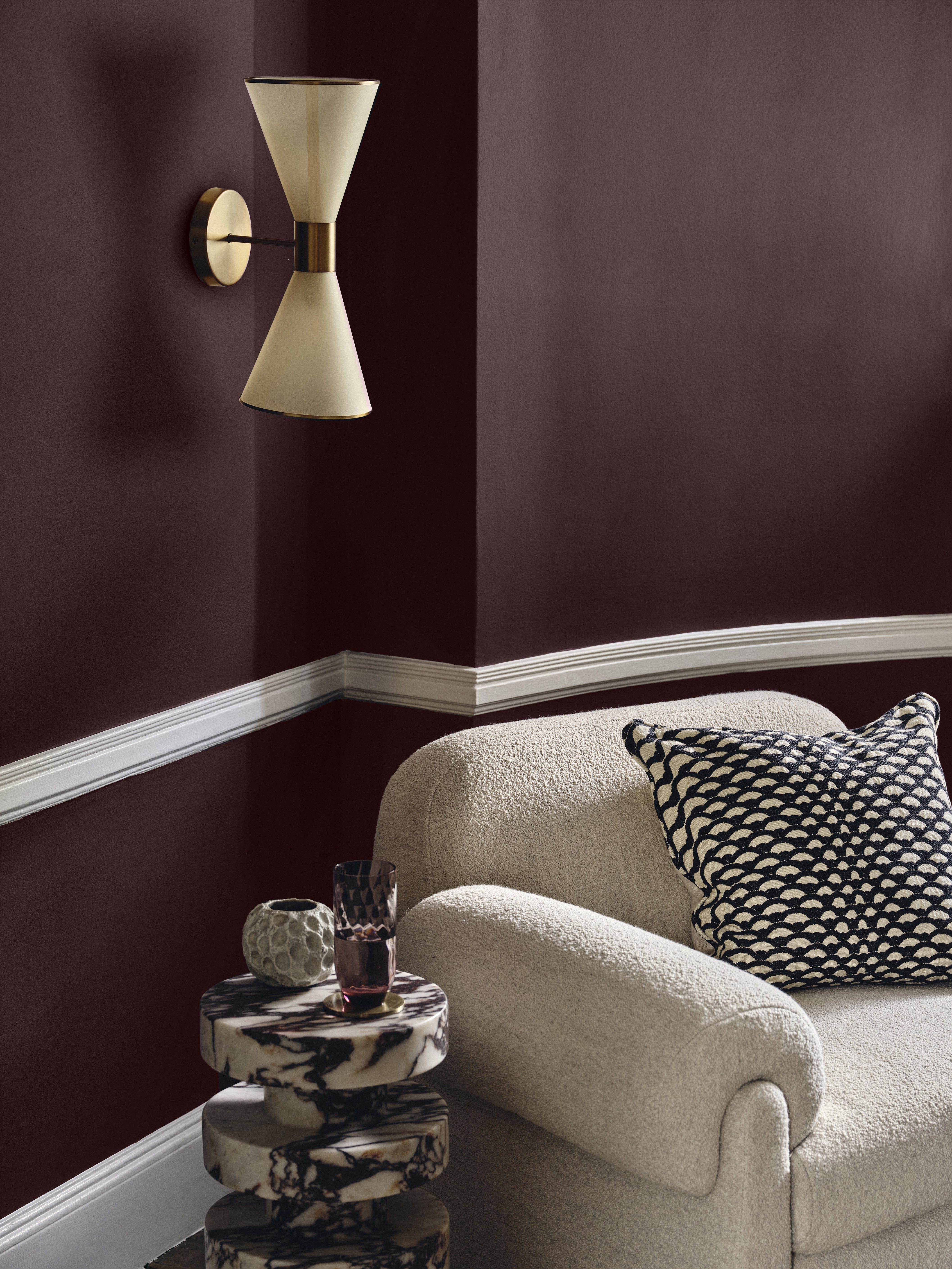
Another way to bring down the boldness and high saturation of a jewel tone is by contrasting it with a neutral such as cream, light grey, or white. Plus, neutral tones offer greater flexibility, allowing you to easily change accent colors, and even decor styles over some time.
Sometimes adding a neutral color scheme to a jewel tone palette can make an interior seems a little off, as a neutral may read too one-dimensional and flat, while the jewel tone looks OTT and glossy. So, consider bringing in neutrals in textured ways. Think simple wall treatments, such as glazes, or limewash; in furnishings choose a white suede sofa or a fluffy fur carpet in light grey.
7. Complement jewel tones with reflective materials
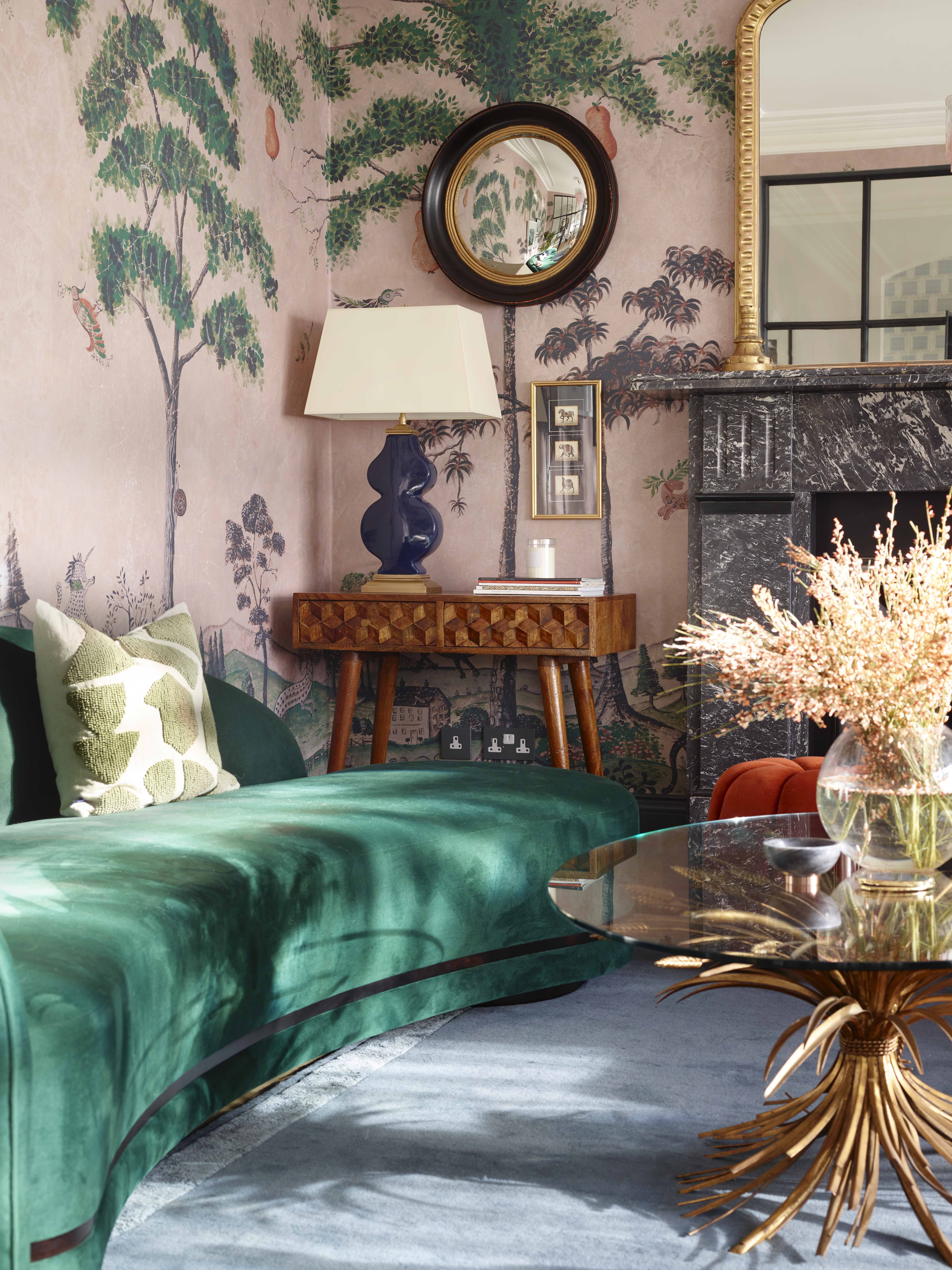
Jewel tones are inherently statement-making, and when it comes to paints, look particularly rich in gloss paint or semi-gloss finish.
A great way to compliment them is with reflective surfaces such as mirrors, glass, and metallics that help to play up the glam look. When going in for metallics, choose a single finish, such as gold or silver.
8. Ground jewel tones with wood accents
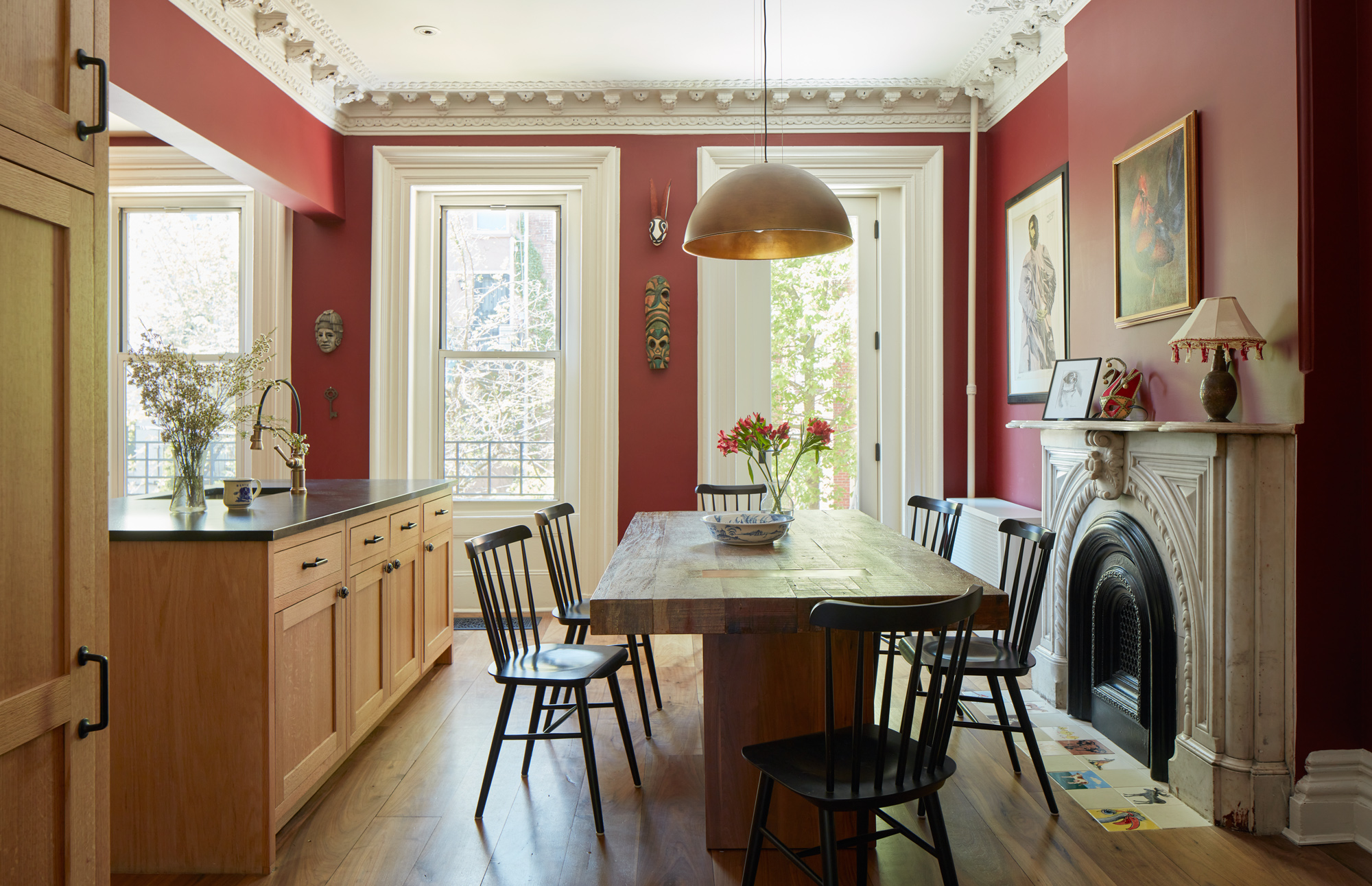
Yes, jewel tones, as mentioned before add a royal, grand look to a room. But this feeling of grandeur can sometimes have the opposite effect, making a space feel too ornate. Tones such as scarlet and emerald green can especially create that atmosphere. To tone the look down, consider weaving in earth tones or natural materials for a show-stopping yet warm space.
Choose the best paint colors that go with natural wood, to create a smart, stylish yet cocooning interior. Pair jewel tones with light woods like beech, oak, or ash, and pine.
Rectory Red from Farrow & Ball
This rich red has a sophisticated feel and looks lovely with wood tones and neutrals. The warm hue adds coziness to spaces and shines deeper in natural light.
9. Add a jewel tone to a minimalist scheme
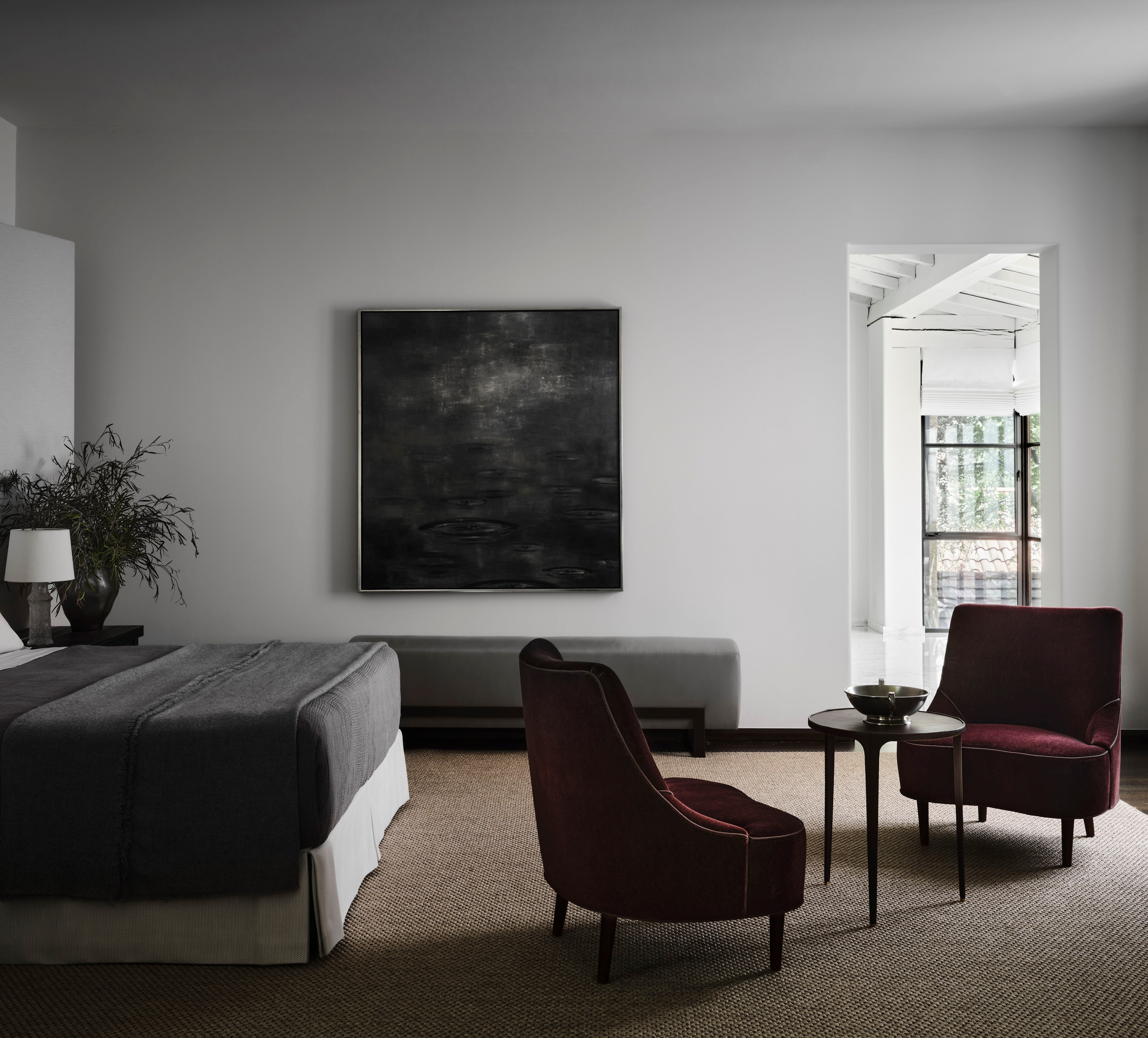
'Jewel tones look amazing as accent colours and bring a bit of depth and character to a softer scheme,' says Tash. 'However, be mindful that these colours will bring the ceiling height down but will definitely create more of a cozier vibe.'
'Sofas and armchairs are often the focal point of a room, making them the perfect place to employ jewel tones,' says Gisela Lancaster of Sofology. 'Sumptuous velvets are the perfect vehicle to carry the look; offering comfort and the ability to carry rich colour, they can be dressed up with statement paints, papers and textiles or, if you want to hero your furniture, pair upholstery pieces with calm neutrals.'
10. Color drench with a jewel tone
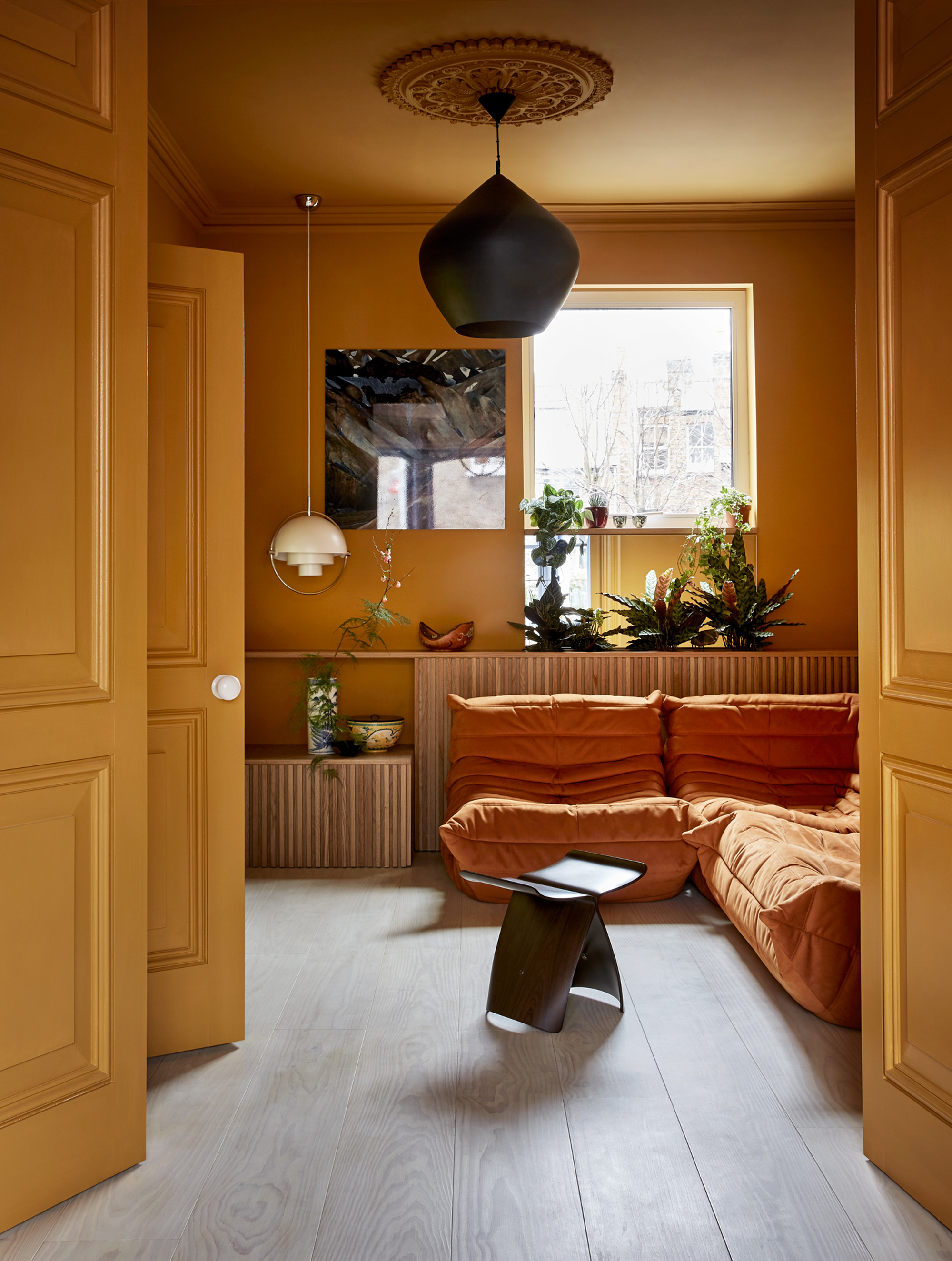
Love jewel colors and want to give your home or a particular room a big boost? Consider painting the ceiling and walls in the same color, say a purple, emerald green or ruby.
'Jewel tones ooze a rich, elegant, and decadent feel,' says Tash. 'Due to their boldness, these colours look amazing in darker, north-facing areas and help to absorb the shadow in a smaller room. Make sure you commit to the room when using these colors. Paint all four walls, and then go for a complementary colour on your ceiling and woodwork. This will make the space more serene and calm due to the softer contrast.'

Aditi Sharma Maheshwari started her career at The Address (The Times of India), a tabloid on interiors and art. She wrote profiles of Indian artists, designers, and architects, and covered inspiring houses and commercial properties. After four years, she moved to ELLE DECOR as a senior features writer, where she contributed to the magazine and website, and also worked alongside the events team on India Design ID — the brand’s 10-day, annual design show. She wrote across topics: from designer interviews, and house tours, to new product launches, shopping pages, and reviews. After three years, she was hired as the senior editor at Houzz. The website content focused on practical advice on decorating the home and making design feel more approachable. She created fresh series on budget buys, design hacks, and DIYs, all backed with expert advice. Equipped with sizable knowledge of the industry and with a good network, she moved to Architectural Digest (Conde Nast) as the digital editor. The publication's focus was on high-end design, and her content highlighted A-listers, starchitects, and high-concept products, all customized for an audience that loves and invests in luxury. After a two-year stint, she moved to the UK and was hired at Livingetc as a design editor. She now freelances for a variety of interiors publications.
